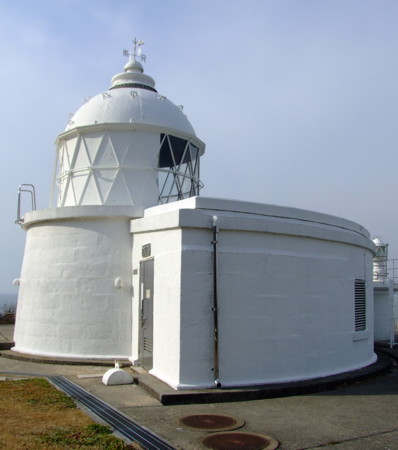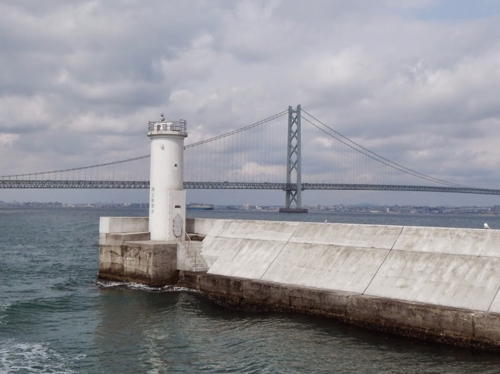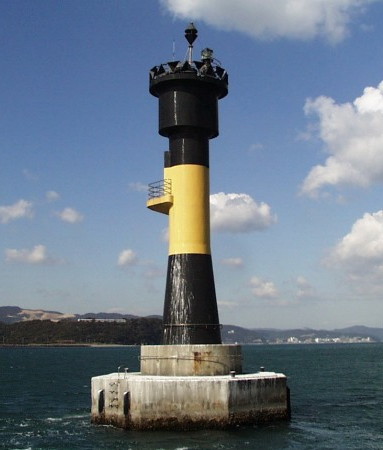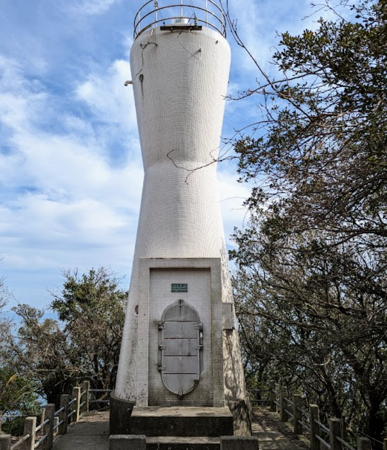The nation of Japan, known in Japanese as Nihon or Nippon (日本), occupies an archipelago off the east coast of Asia. The four main islands are Hokkaidō in the north, Honshū (the largest) in the center, Shikoku in the south, and Kyūshū in the southwest. The country includes thousands of other islands of all sizes; among them the Ryūkyū (Nansei) Islands are a long chain extending to the southwest and including the large island of Okinawa, and the Nanpō Islands are another long chain extending south into the Pacific Ocean. Much of Japan is mountainous but the coastal regions are densely populated and urbanized; the country's population is about 126 million.
Japan is divided into 47 prefectures. Awaji is a large island of Hyōgo Prefecture in central Japan. Awaji is about 105 km (66 mi) long, stretching across the eastern end of the Seto Inland Sea (Seto Naikai) south of Kōbe. About 160,000 people live on the island. The northeastern end of Awaji is separated from Honshū by the narrow Akashi Strait, while the southwestern end is separated from Shikoku by the even more narrow Naruto Strait. The Kōbe-Awaji-Naruto Expressway crosses the island lengthwise and provides a high-speed link between Shikoku and Honshū. The expressway crosses the Akashi Strait by the Akashi Kaikyō Bridge, which currently has the world's second longest suspension span (1991 m or 6532 ft). Ōsaka Bay is the portion of the Seto Inland Sea to the east of Awaji, and Harima Bay is on the west.
In Japanese the word for a lighthouse is tōdai or toudai (灯台). The words saki and misaki are for capes and headlands, hana ("nose") is a promontory, hantō is a peninsula, shima (also spelled sima or jima) is an island, bae is a reef, iwa or shi is a rocky reef, amase or se is a shoal, wan is a bay, nada is a sound or basin, kaikyō is a strait, kawa is a river, and kō or minato is a harbor.
Lighthouses in Japan are operated and maintained by the Japanese Coast Guard's Maritime Safety Agency. On Honshū there is at least one Coast Guard Section Office in each prefecture, often two. The lighthouses of Awaji Shima are maintained by the Kōbe office.
ARLHS numbers are from the ARLHS World List of Lights. JCG numbers are the Japanese Coast Guard's light list numbers. Admiralty numbers are from volume M of the Admiralty List of Lights & Fog Signals. U.S. NGA List numbers are from Publication 112.
- General Sources
- Lighthouses in Japan - Hyōgo
- A site providing photos and data for most major Japanese lighthouses.
- Lighthouse-Japan.com - Hyōgo
- Another comprehensive site with photos and notes from visits to many lighthouses.
- Form of a Lighthouse - Hyōgo
- Another site with many photos of Japanese lighthouses and notes on how to find them; cited below as FOAL.
- Kiso's Lighthouses
- This site has many excellent photos of Japanese lighthouses.
- Misty's Japanese Lighthouse Tour - Hyōgo
- Photos and a few notes for lighthouses in all parts of the country.
- Online List of Lights - Japan
- Photos by various photographers posted by Alexander Trabas.
- Lighthouses in Hyōgo Prefecture
- Photos by various photographers available from Wikimedia.
- Richard Henry Brunton
- Wikipedia article on the Scottish engineer who built most of Japan's oldest lighthouses.
- Japan: Modern Lighthouses
- Historic postcard views posted by Michel Forand.
- Navionics Charts
- Navigation chart for the Inland Sea.
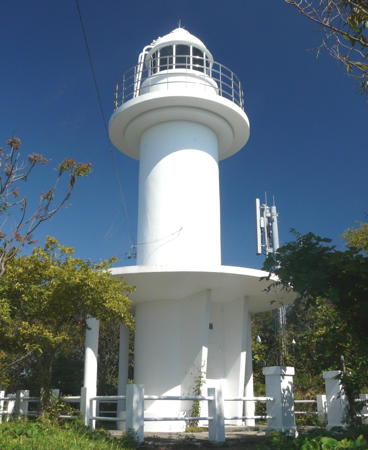
Numa Shima Light, Minamiawaji, July 2020
Instagram photo by kutakutatoto
